Countries in Northern Europe
How Many Countries in Northern Europe
As a region of Europe, Northern Europe is composed of 10 independent countries (Denmark, Estonia, Finland, Iceland, Ireland, Latvia, Lithuania, Norway, Sweden, United Kingdom) and 3 territories (Åland Islands, Faroe Islands, Isle of Man). See below for the list of North European countries and dependencies by population. Also, you can find all of them in alphabetical order at this end of this page.
1. Denmark
Denmark is Sweden’s neighbor and borders maritime with Sweden in the east. Denmark also includes the Faroe Islands and Greenland, both with a developed autonomy. Administratively, Denmark is divided into North Jutland, Zealand, Southern Denmark, Central Jutland and the capital.
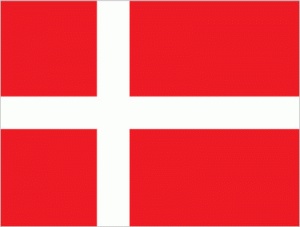 |
|
2. Estonia
Estonia, officially the Republic of Estonia, is a country in the Baltics bordering Latvia and Russia.
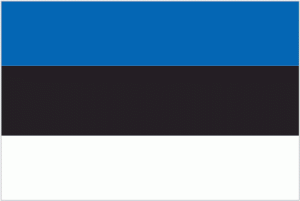 |
|
3. Finland
Finland, officially the Republic of Finland, is a republic in northern Europe. Finland has land borders with Norway, Sweden, Russia and in the southern sea border with Estonia. The Gulf of Finland lies between Finland and Estonia.
 |
|
4. Iceland
Iceland is a republic that includes the island of the same name and associated smaller islands. Iceland is located in the North Atlantic between Greenland and the Faroe Islands, just south of the Arctic Circle.
 |
|
5. Ireland
Ireland is a state in Europe that occupies about five-sixths of the island of Ireland, which was divided in 1921. It shares its only land border with Northern Ireland, part of Great Britain, on the northeastern part of the island.
 |
|
6. Latvia
Latvia, officially the Republic of Latvia, is a republic in the Baltics in northern Europe, bordering the Baltic Sea to the west, Estonia to the north, Russia to the east and Lithuania and Belarus to the south.
 |
|
7. Lithuania
Lithuania, formally the Republic of Lithuania, is a republic in the Baltics of Northern Europe. The country borders Latvia to the north, Belarus and Poland to the south and the Russian exclave of Kaliningrad to the southwest. The country’s national day is February 16.
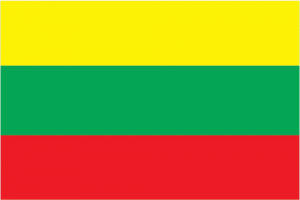 |
|
8. Norway
Norway, formally the Kingdom of Norway, is a constitutional monarchy in northern Europe, west of Sweden on the Scandinavian peninsula. In addition to Sweden, Norway has a land border with Russia and Finland in the northernmost parts.
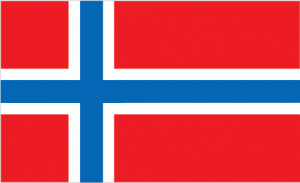 |
|
9. Sweden
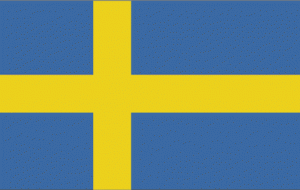 |
|
10. United Kingdom
The United Kingdom, formally the United Kingdom of Great Britain and Northern Ireland, is a sovereign state located off the northwest coast of the European continent.
 |
|
List of Countries in Northern Europe and Their Capitals
As noted above, there are ten independent countries in the Northern Europe. Among them, the largest country is United Kingdom and the smallest is Iceland. The full list of Northern European countries with capitals is shown in the table below, ranked by latest total population.
| Rank | Independent Country | Current Population | Capital |
| 1 | United Kingdom | 66,040,229 | London |
| 2 | Sweden | 10,263,568 | Stockholm |
| 3 | Denmark | 5,811,413 | Copenhagen |
| 4 | Finland | 5,518,752 | Helsinki |
| 5 | Norway | 5,334,762 | Oslo |
| 6 | Ireland | 4,857,000 | Dublin |
| 7 | Lithuania | 2,791,133 | Vilnius |
| 8 | Latvia | 1,915,100 | Riga |
| 9 | Estonia | 1,324,820 | Tallinn |
| 10 | Iceland | 358,780 | Reykjavik |
Territories in Northern Europe
| Rank | Dependent Territory | Population | Territory of |
| 1 | Isle of Man | 83,314 | U.K. |
| 2 | Faroe Islands | 51,705 | Denmark |
| 3 | Åland Islands | 29,489 | Finland |
Map of Countries in Northern Europe
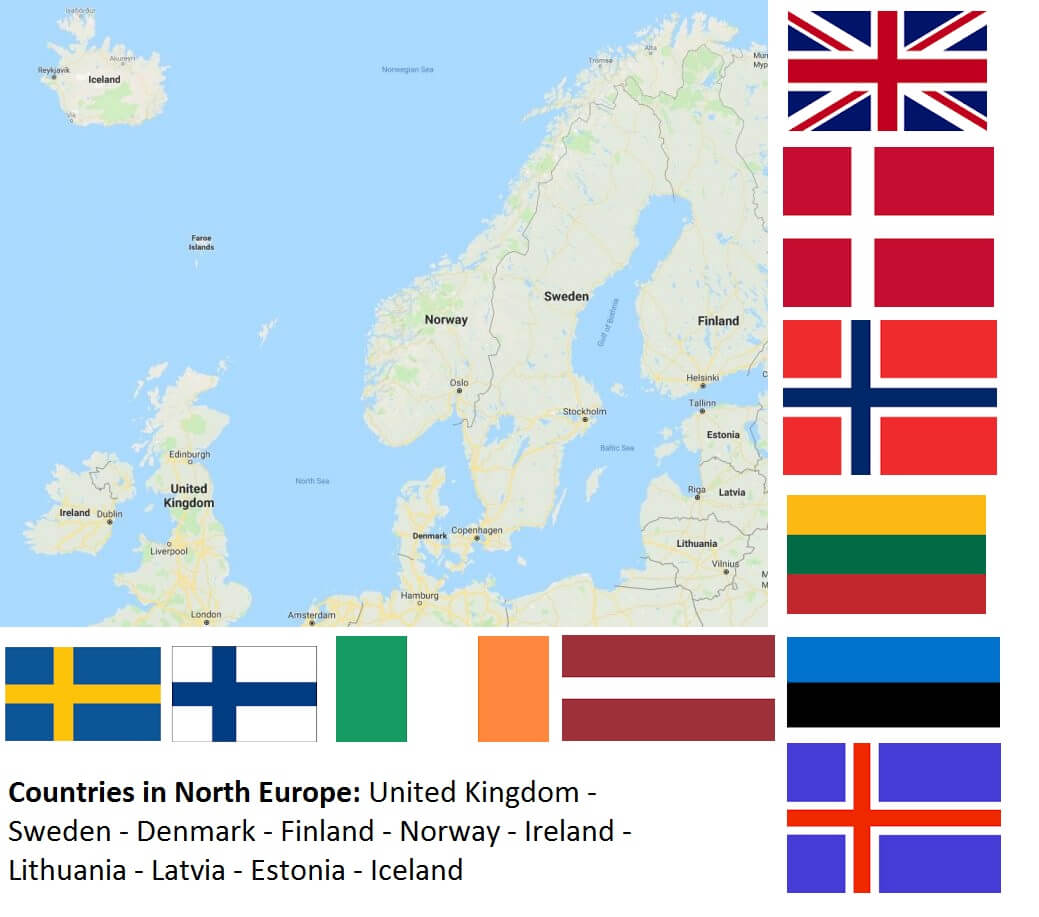
Brief History of Northern Europe
Early History and Antiquity
Prehistoric and Early Societies
Northern Europe, encompassing regions like Scandinavia, the British Isles, and the Baltics, has a rich prehistoric heritage. Evidence of early human activity dates back to the Paleolithic era, with significant developments during the Mesolithic and Neolithic periods as communities transitioned from hunter-gatherer lifestyles to settled agricultural societies. Megalithic structures, such as Stonehenge in England and the burial mounds of Denmark, highlight the region’s early cultural sophistication.
Roman Influence and Germanic Tribes
The Roman Empire’s influence extended into parts of Northern Europe, notably the southern areas of Britain and the fringes of the Rhine-Danube frontier. The Roman conquest of Britain began in 43 CE, leading to the establishment of Roman rule and infrastructure that lasted until the early 5th century. Concurrently, Germanic tribes such as the Angles, Saxons, Jutes, and Goths migrated and settled across Northern Europe, laying the foundations for future nation-states.
The Viking Age
Viking Expansion
The Viking Age (c. 793-1066 CE) marked a period of significant expansion, exploration, and cultural development in Northern Europe. Originating from present-day Denmark, Norway, and Sweden, the Vikings ventured across Europe, establishing settlements and trading networks as far afield as North America, Russia, and the Mediterranean. They founded important trade centers like Dublin in Ireland and Kiev in Ukraine, contributing to the cultural and economic exchange across Europe.
Societal and Cultural Contributions
The Vikings left a lasting legacy on Northern Europe, influencing language, culture, and political structures. The Norse sagas, runic inscriptions, and distinctive art styles are notable cultural contributions from this era. The establishment of the Danelaw in England and the creation of the Kievan Rus’ state exemplify the political impact of Viking activities.
Medieval Period
Christianization and Kingdom Formation
The medieval period saw the gradual Christianization of Northern Europe, beginning in the 8th century and largely completed by the 12th century. Missionaries, such as St. Patrick in Ireland and St. Ansgar in Scandinavia, played pivotal roles in this process. This era also witnessed the consolidation of regional power into emerging kingdoms, such as Denmark, Sweden, and Norway, alongside the development of feudal systems.
The Hanseatic League
During the late Middle Ages, the Hanseatic League, a powerful economic and defensive alliance of merchant guilds and market towns, dominated trade in the Baltic and North Sea regions. Founded in the 12th century, the League facilitated economic growth and urban development in cities like Lübeck, Hamburg, and Bergen, promoting cross-regional trade and cultural exchange.
Early Modern Period
Reformation and Religious Conflicts
The 16th century Reformation profoundly impacted Northern Europe, leading to significant religious and political upheaval. Martin Luther’s 95 Theses in 1517 sparked the Protestant Reformation, which gained substantial traction in Germany, Scandinavia, and England. The subsequent religious conflicts, such as the Thirty Years’ War (1618-1648), reshaped the political and religious landscape of the region, leading to the establishment of Protestant state churches.
Exploration and Colonialism
Northern European nations played crucial roles in the Age of Exploration and subsequent colonial endeavors. The English, Dutch, and Swedish established colonies and trading posts across the Americas, Africa, and Asia. The British Empire, in particular, emerged as a dominant global power by the 18th century, influencing world trade, politics, and culture.
Industrial Revolution and Modernization
Industrialization
The Industrial Revolution, originating in Britain in the late 18th century, brought unprecedented economic and social changes to Northern Europe. Industrialization spread rapidly, transforming economies from agrarian-based systems to industrial powerhouses. Innovations in technology, transportation, and manufacturing spurred urbanization and societal shifts, laying the groundwork for modern economic structures.
Political Changes and Nationalism
The 19th century was marked by significant political changes, with movements for national unification and independence gaining momentum. The unification of Germany in 1871 and the independence of Norway from Sweden in 1905 exemplify these nationalist aspirations. Additionally, democratic ideals and social reforms began to take root, leading to gradual expansions of political participation and civil rights.
20th Century and Contemporary Developments
World Wars and Their Aftermath
The two World Wars had profound impacts on Northern Europe. World War I led to significant political changes, including the dissolution of empires and the redrawing of national boundaries. World War II, particularly devastating for the region, resulted in widespread destruction but also set the stage for post-war reconstruction and economic recovery. The Marshall Plan and the establishment of welfare states contributed to the rebuilding of Northern European economies and societies.
European Integration and Modern Challenges
In the latter half of the 20th century, Northern Europe became a key player in the European integration process. Countries like Denmark, Sweden, and Finland joined the European Union, fostering economic cooperation and political stability. The region has also been at the forefront of social and environmental policies, promoting sustainability and progressive social models.













































